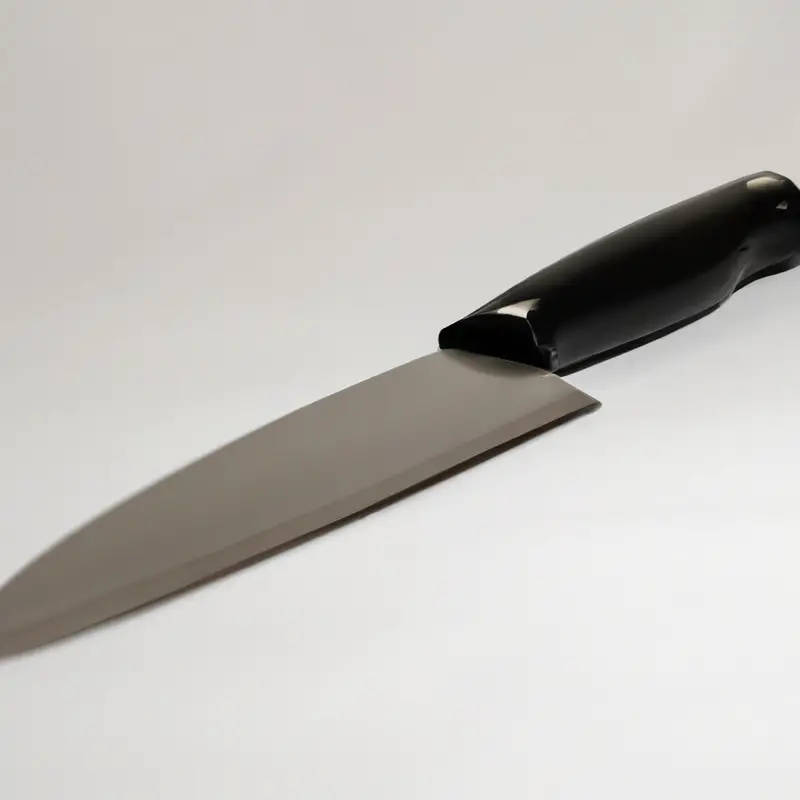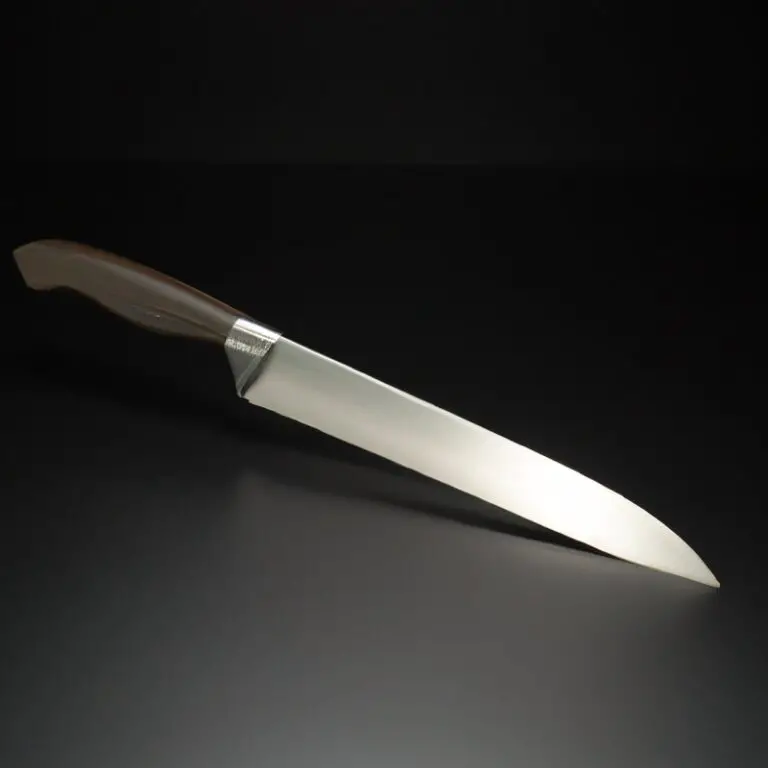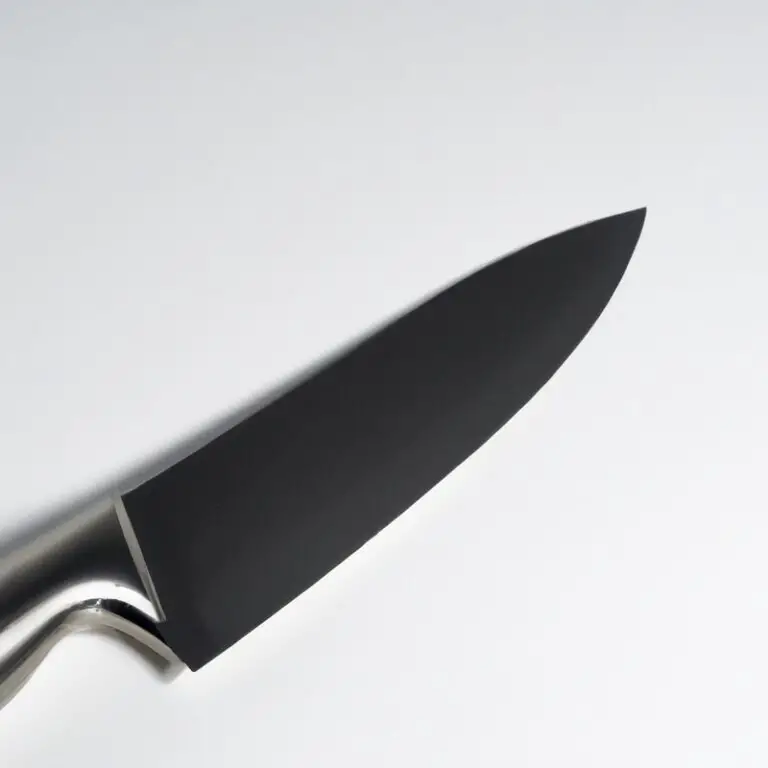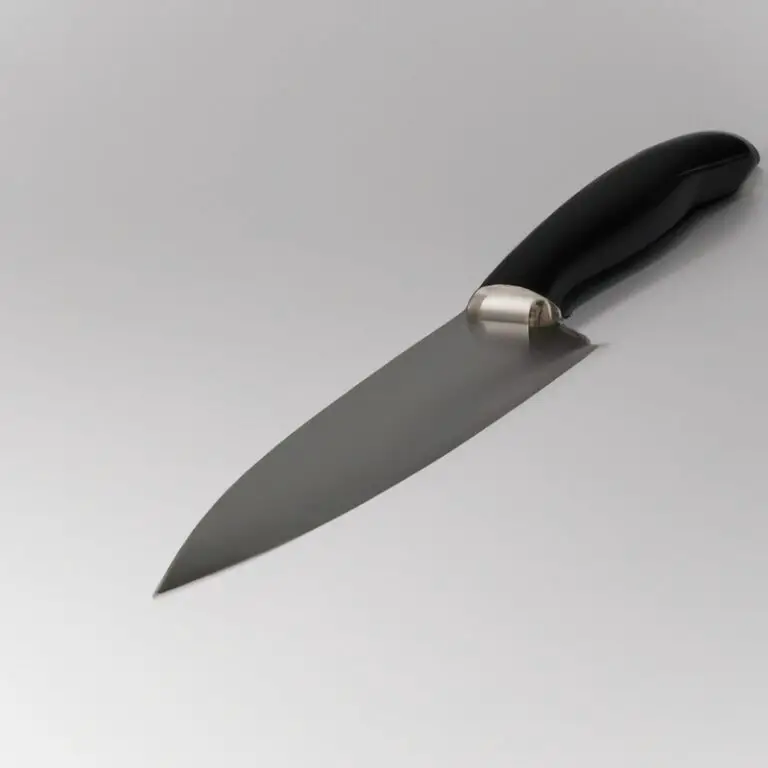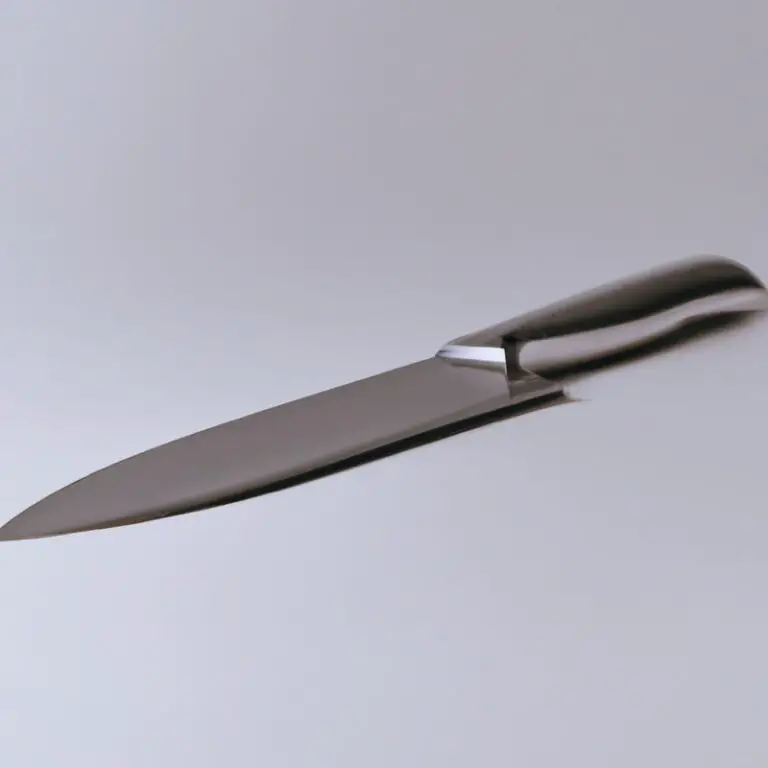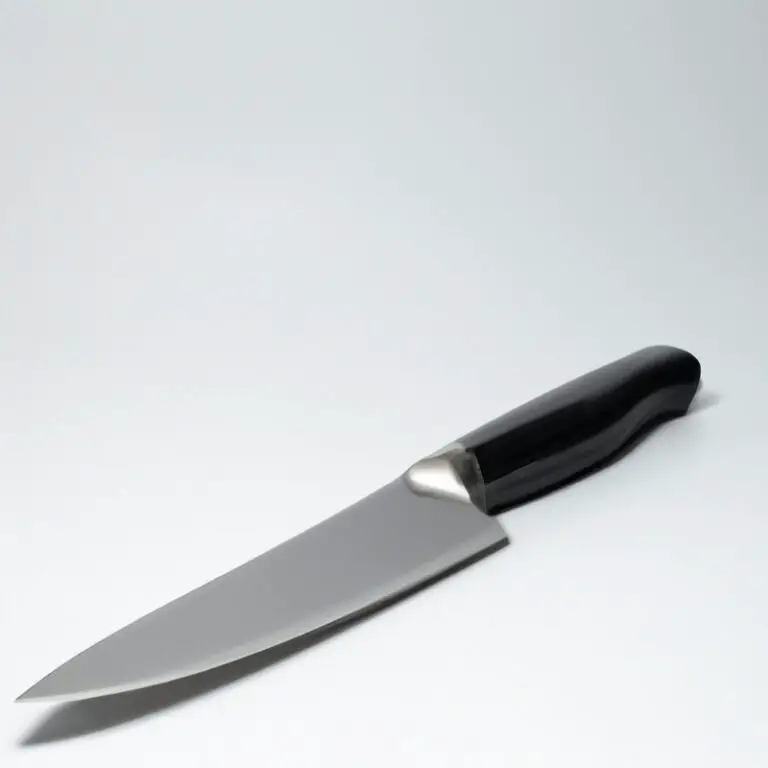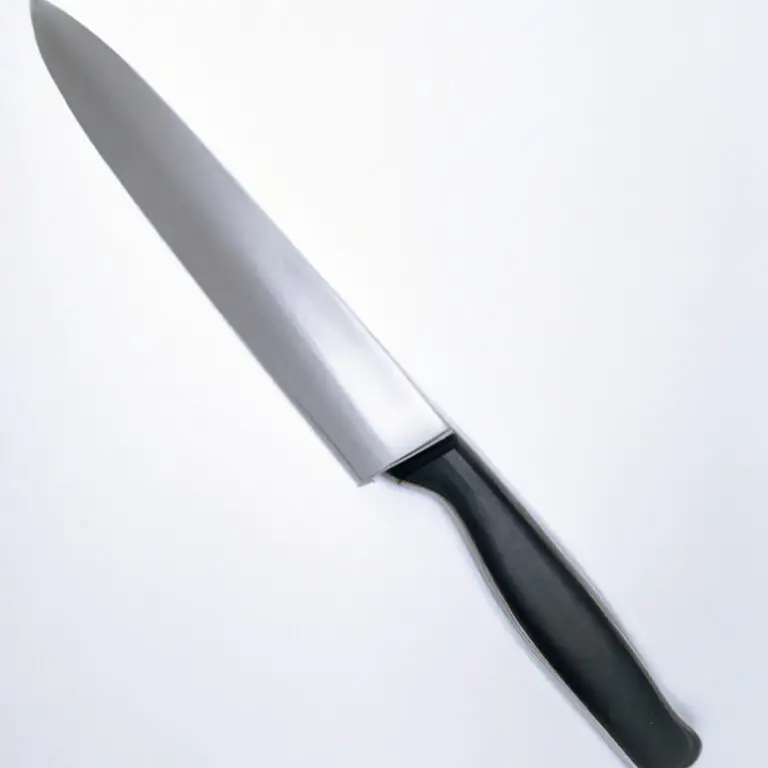How To Safely Slice With a Chef Knife? Master The Art Today!
Key Takeaways:
- Always grip the handle firmly and keep your fingers away from the blade to avoid injuries.
- Use a sharpened knife and keep it steady while cutting with a rocking motion to ensure accuracy and control.
- Cut on a stable cutting board placed on a non-slip surface to prevent it from moving during slicing.
- Practice proper hand placement and slicing techniques, such as the claw grip, to ensure efficient and safe cutting every time.
Whether you’re a professional chef or a home cook, using a chef knife can be intimidating, especially when it comes to slicing. But with the right technique and equipment, anyone can safely slice with a chef knife.
In this article, I’ll guide you through understanding your chef knife, choosing the right one, mastering the grip, preparing your cutting board, and using proper slicing techniques.
I’ll also cover how to maintain, store, and even protect your chef knife from accidents and injuries. Let’s get started and unlock the secrets of safe slicing with a chef knife!
| Step | Instructions |
|---|---|
| Step 1 | Ensure that the cutting board is stable and won’t slip during use. |
| Step 2 | Hold the chef knife with your dominant hand, securely gripped around the handle with your thumb and index finger on opposite sides of the blade’s base. |
| Step 3 | To start slicing, place the point of the knife on the cutting board and slowly drag it towards your body while applying slight pressure. |
| Step 4 | For safety, use a “claw” grip with your non-dominant hand to hold the food and keep your fingers tucked in, away from the blade. Position the food so that the area to be sliced is facing away from you. |
| Step 5 | Using a smooth back-and-forth motion, slice the food by drawing the blade through it. |
| Step 6 | Never use the chef knife with a dull blade, and always cut with the blade away from your hand and fingers. |
Understanding Your Chef Knife: Different Parts and Functions
A chef knife has different parts and functions, and understanding them is crucial for safe slicing. The blade is the primary part and comes in different lengths, shapes, and materials.
The spine is the thick top part that adds weight to the blade, while the heel is the bottom section that cuts through tough ingredients.
The bolster is the thick junction between the blade and handle that provides balance and finger protection. The tang is the metal part that extends into the handle and affects the knife’s balance and durability.
The handle offers grip and control, and some models come in different materials like wood, plastic, or metal.
Knowing the different parts and functions of your chef knife will enable you to choose the right model, handle it correctly, and maintain it well.
How to Choose the Right Chef Knife for Safe Slicing
Choosing the right chef knife for safe slicing is crucial to prevent accidents and achieve clean cuts. When selecting a chef knife, consider the following factors:
- Blade Size: Choose a blade that is at least eight inches long for efficient slicing.
- Blade Shape: Select a knife with a curved or straight blade edge depending on the type of slicing technique you prefer.
- Blade Material: Look for durable and high-quality materials like stainless steel, carbon steel, or ceramic.
- Handle Comfort: Choose a handle that provides a firm and comfortable grip to avoid slippage.
- Weight Distribution: Pick a knife that has a balanced weight distribution between the handle and blade to make it easier to control.
- Brand Reputation: Consider reputable brands and read reviews from experts and other customers to ensure quality and reliability.
By keeping these factors in mind, you can choose a chef knife that fits your needs and preferences and ensures safe slicing practices.
Mastering the Grip: Proper Hand Placement for Safe Slicing
Mastering the grip is crucial for safe slicing with a chef knife. Proper hand placement helps you control the knife’s movement and prevents it from slipping, reducing the risk of injury.
Place your index finger and thumb on opposite sides of the blade, just ahead of the handle.
Wrap your remaining fingers around the handle comfortably. Ensure that your grip is firm but not too tight, allowing you to move your wrist and forearm freely.
Avoid placing your fingers on top of the blade as this can lead to injuries.
Also, avoid curling your fingers or holding your knife too close to the blade’s tip. Instead, keep your fingers away from the path of the blade and hold your knife mid-way through the blade.
Remember, it takes a bit of practice to get the grip right.
Position your arm in such a way that the knife runs parallel to the cutting board. Follow the instructions carefully, and do not hesitate to ask for guidance if you feel unsure.
How to Prepare Your Cutting Board for Safe Slicing
To prepare your cutting board for safe slicing, start by choosing the right type of cutting board based on your needs. Plastic and wooden cutting boards are the most popular choices, but plastic boards are easier to sanitize and wooden boards are easier on your knives.
Next, clean your cutting board thoroughly before each use.
Use hot, soapy water to clean the board and rinse it well. A solution of equal parts white vinegar and water can be used to sanitize your cutting board, especially if you plan on cutting raw meat.
It’s also important to maintain your cutting board by oiling it regularly to prevent it from cracking.
Mineral oil or food-grade oils like walnut or coconut oil are good choices. Before you start slicing, make sure your cutting board is stable and secure on a non-slip surface to avoid any accidents.
Lastly, be sure to avoid cross-contamination by using separate cutting boards for raw meat, produce, and other foods.
Techniques for Safe Slicing: Rocking, Chopping, and More
To ensure safe slicing with a chef knife, it’s important to learn and master proper techniques. Two of the most common techniques are rocking and chopping.
When rocking, use a gentle back and forth motion to create a rhythmic cutting pattern.
This technique is best for slicing herbs and vegetables. Chopping, on the other hand, involves a more forceful downward motion and is best for slicing through harder ingredients like meat or root vegetables.
Proper hand placement is also essential in both techniques.
For larger ingredients, use a claw grip to protect your fingers. For smaller ingredients, use a pinch grip to gain more control.
Experiment with different techniques to find what works best for you and always maintain a sharp blade to prevent slips and cuts.
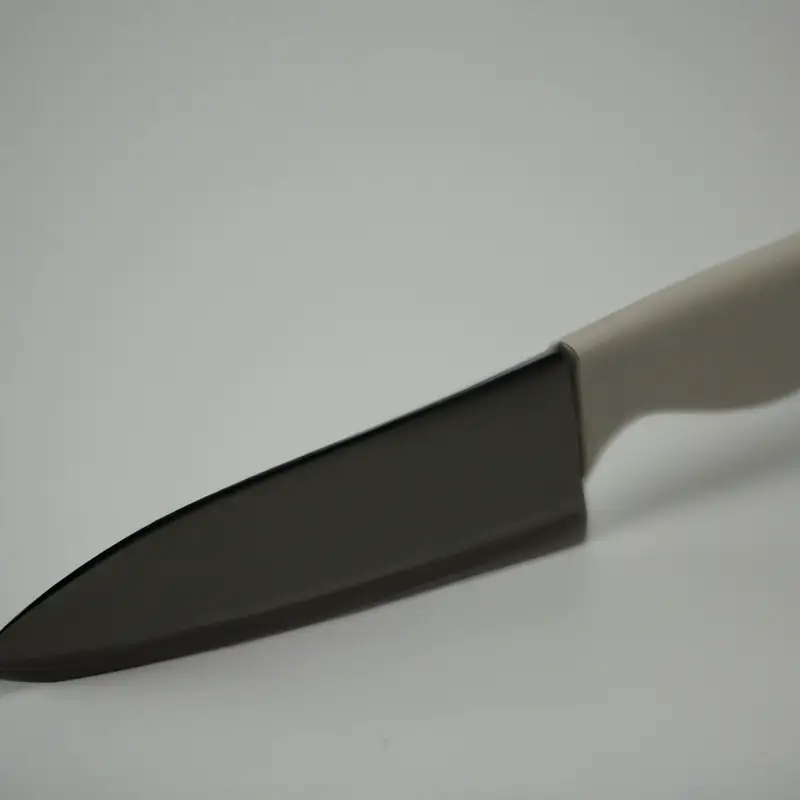
Maintaining Your Chef Knife for Safe Slicing: Sharpening and Honing
Maintaining your chef knife through sharpening and honing is crucial for safe slicing. A dull blade requires more force to cut, which increases the likelihood of slips and cuts.
Sharpening involves grinding the blade to create a new edge while honing aligns the blade’s edge.
Both processes should be done regularly to maintain the sharpness of the blade. Using a sharpening stone or an electric sharpener can help keep your knife sharp.
Start by testing the sharpness with a piece of paper – if it slices through easily, it’s sharp.
If not, repeat the sharpening process until the blade cuts through the paper with ease. Honing can be done with a honing steel or ceramic honing rod.
Run the full length of the blade against the honing tool at a 20-degree angle on each side.
Avoid using too much force during honing as it can damage the blade. Overall, regular sharpening and honing are essential for maintaining a sharp blade and minimizing the risk of accidents when slicing.
Safety Tips for Slicing with a Chef Knife: Avoiding Cuts and Injuries
Safety Tips for Slicing with a Chef Knife: Avoiding Cuts and Injuries
- Always keep your fingers and hands away from the blade while slicing.
- Use a sharp knife to reduce the risk of slipping and injuring yourself.
- Cut away from your body, never towards it.
- Avoid distractions and stay focused while slicing.
- Use a cutting board with a non-slip grip to prevent it from moving around while slicing.
- Never leave your knife on the edge of the counter or cutting board.
- Store your knife in a designated knife block or a magnetic strip to avoid accidentally reaching for it and cutting yourself.
- Use a knife guard for additional protection when transporting your knife.
- Keep the blade pointed downwards while carrying it.
- Take your time and practice your slicing techniques to improve your skills and prevent accidents.
Using a Knife Guard for Extra Protection while Slicing
Using a knife guard is an effective way to offer extra protection while slicing with a chef knife. A knife guard typically covers the sharp blade of a knife, minimizing the risk of accidental cuts on your fingers, hands, or anything else that gets in the way during slicing.
However, it is important to note that not all knives come with a knife guard, and it may be necessary to purchase one separately.
Knife guards come in different sizes and materials to fit various types of knives. When using a knife guard, it is crucial to ensure that the guard fits snugly on the blade and covers the entire sharp edge.
A poorly fitting or loose guard can be dangerous, as it may slip off during slicing and cause an injury.
Moreover, it is important to keep the knife and the guard clean and dry after use to prevent rust or damage to the blade. Additionally, it is recommended to store the knife with the guard on for added protection and to prevent it from accidentally slicing anything else in storage.
Overall, using a knife guard can offer an added layer of safety during slicing, but it is important to choose the right size and fit, clean and maintain it properly, and use it correctly to avoid any accidents.
Safe Slicing with Wet and Slippery Ingredients: Tricks to Keep in Mind
Slicing wet or slippery ingredients can be dangerous if not done carefully and with proper technique. To prevent accidents, there are a few tricks to keep in mind.
Firstly, make sure your cutting board is dry and stable.
Use a paper towel to wipe excess moisture off of the ingredient before cutting. Secondly, use a claw grip to hold the ingredient in place with your non-dominant hand, while keeping your fingers away from the blade.
Thirdly, use a rocking motion rather than a chopping motion to ensure the blade stays in contact with the ingredient.
Finally, take your time and be patient to avoid rushed movements that could lead to injury. By following these simple tricks, you can safely slice wet and slippery ingredients with your chef knife.
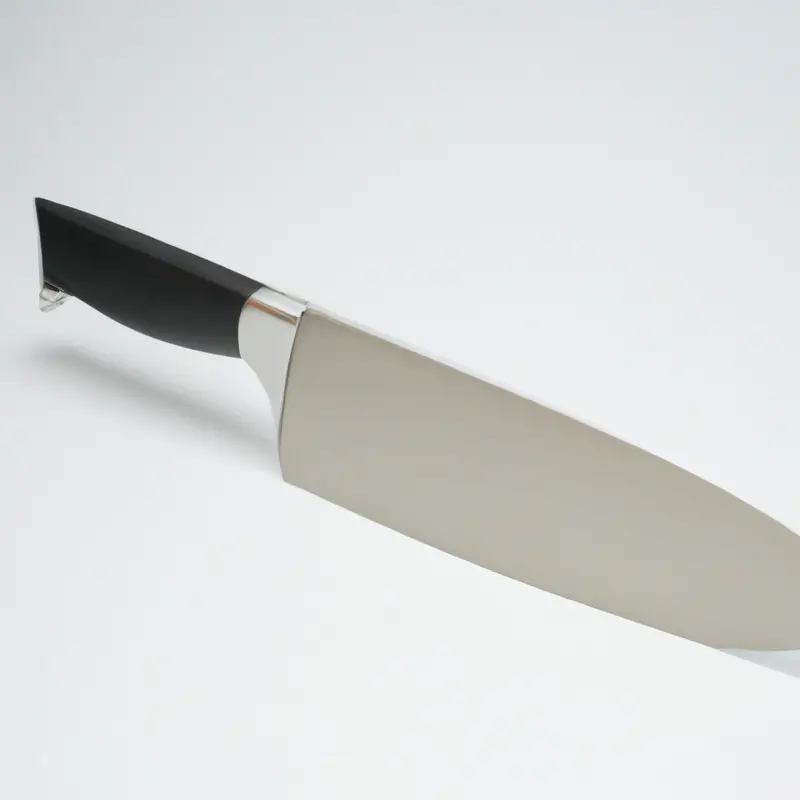
Safe Storage of Your Chef Knife: Avoiding Accidents and Protecting the Blade
Safe storage of a chef knife is essential to prevent accidents and protect the blade. When not in use, it’s best to keep the knife in a designated place, such as a wooden knife block or a magnetic strip.
Avoid storing it loose in a drawer, as it can damage both the blade and other utensils.
When traveling with your chef knife, it’s advisable to use a blade guard to protect the blade and avoid injuries. Always make sure the knife is clean and dry before storing it to prevent corrosion and possible rust formation.
Remember to store your chef knife where children cannot reach it to avoid accidents and potential harm.
Final Verdict
Safe slicing with a chef knife is a critical skill that every chef, home cook, or student of culinary arts should learn. Understanding the different parts and functions of a chef knife, proper hand placement, cutting board preparation, and sharpening are all essential for safe slicing.
By following the techniques discussed in this article, you can reduce the risk of injury and maximize your efficiency and precision in the kitchen.
Always remember to prioritize safety and take precautions like using a knife guard when necessary. With these practical tips, you will be able to master the art of safe slicing while creating delicious meals with confidence.
Trust in your skills, implement the tips and techniques discussed here, and experience a new level of culinary mastery.

